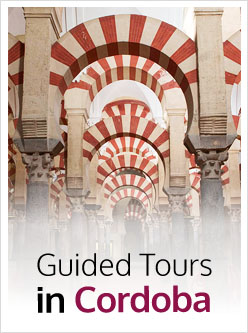The Tabernacle Chapel was founded in 1330 by Juan Ponce de Cabrera’s widow, when she donated 500 maravedis (old Spanish coin) to the Chapter, with the aim of using it as a tomb for her deceased husband, and in the future, for her family. However, it was first known as Chapel of Saint James. Located in the southeast of the Mosque-Cathedral, it occupied the first three naves of Almanzor’s extension, and it was four intercolumns deep.
Since 1480 the Cathedral Chapter had been considering the idea of moving the Chapter library, located then in the Chapel of Saint Clement, to the Saint James. However, and after several unsuccessful attempts, mainly due to economic problems, we must go back to the year 1517 to have a reliable proof of the beginning and correct progress of the works.
The architect chosen to prepare the space for its new functions was Hernán Ruiz I the Old, master who also projected the new Main Chapel. From his intervention, we can highlight the building of the Gothic ribbed vault covering the central nave, or the three doors to enter the chapel, located in the northern side. Only two of them, the side ones, preserve their original state, since the central access was remodelled by his grandson Hernán Ruiz III in 1571.
But, just as Manuel Nieto Cumplido, archivist of the Mosque-Cathedral of Córdoba, expresses: “a new project came to ruin the destiny of the building for the third time“. The Cathedral Chapter indeed decided that this would be the ideal location for the new Tabernacle Chapel, which, since the 13th century, had been situated in the collateral chapel to Saint Peter (Mihrab). In 1581 all the material from the library was transfered to the chambers.
We have a great deal of documentation about the reconditioning of the chapel as Tabernacle. In fact, we know that the painter Luís de Valdivieso, born in Seville, was initially hired to decorate the plaster in the arches and the vaults of the place. However, there is no evidence of the paintings or any documents proving their existence. We also know that Fernando de Valencia, bar maker of the factory, was appointed to make the bars of the chapel, and he died before finishing them, so Juan Martínez, his apprentice, completed them in 1581. Before 1578 the Tabernacle had been concluded by the Flemish Guillermo de Orta, since that same year Alonso Rivera was commissioned to decorate it.
Among all the artists that took part in the reconditioning of the chapel as Tabernacle, we can mention the Italian painter Cesare Arbasia, from Saluzzo. It is believed that he faced this great challenge thanks to the advice of his friend Pablo de Céspedes, with whom he had worked in Rome years earlier. The works started in September 1583, and they progressed at a good pace, as they finished at the end of 1586.
We have so far made a brief analysis of the chapel since its foundation, going through its adaptation to Chapter library and, later Tabernacle Chapel, mentioning the different artists who took part in the works. Next, we will study the iconography of the frescos so well done by Arbasia, mentioned earlier.
In the central nave, over the Tabernacle by Guillermo de Orta, which has two frescos on both sides representing “King David” and the “Prophet Isaias“, we can see “The Last Supper“. It is undoubtedly a topic chosen to emphasize the institution of the Eucharist. With this work, he started to be called “leonardesco“, due to the influence he could have received from Leonardo’s work, especially as far as the attitude of the characters is concerned.
The rest of the iconographic programme in the Tabernacle Chapel is the result of the discovery, in those years, of the relics of the Saint Martyrs from Córdoba, found in the current Minor Basilica of San Pedro. At the end of the Epistle nave, we can see “Prayer in the garden“, oil on canvas inspired in a print by Durero, while in the Gospel nave we can see “Jesus saying goodbye to his mother“. Both scenes are related to martyrdom, thus their collocation.
On the other hand, we will highlight the series of frescos where several martyrs from Córdoba are represented. Presented in groups of three, they are displayed chronologically: “Saint Zoilus“, “Saint Eulogius“, “Saint Acisclus“… The representation of “Saint Victory” has been considered as the one with the highest quality of the ensemble, thanks to the great calmness that is transmitted, as well as to the quality of her clothes. In the lunette over each group of martyrs, we can see representations of landscapes which is indeed the aspect where the master had more expertise, the reason why he was so famous in his homeland, Italy. The intradoses of the arches were decorated with angels and symbols of the Passion. The vault projected by Hernán Ruiz I was decorated, as Ambrosio de Morales said: “with a sky of angels“.
If you are wondering what to visit in Córdoba, the best option would be the Mosque-Cathedral, choosing one of our guided tours. This way, you will learn everything about the Tabernacle Chapel. Choosing to do high quality sightseeing is choosing ArtenCórdoba.
Texto: J.A.S.C.


All the information about the monuments, festivals and places of interest in Cordoba… at a click!
If you want more information about the monuments of Cordoba, before doing your guided tours, here is the most complete guide, written by the tour guides and historians of our team
Over 2,000 items!
Mosque-Cathedral
Medina Azahara
Alcazar of the Christian Kings
Synagogue
The Museums
The Coutyards

All the information about the monuments, festivals and places of interest in Cordoba… at a click!
If you want more information about the monuments of Cordoba, before doing your guided tours, here is the most complete guide, written by the tour guides and historians of our team
Over 2,000 items!

















